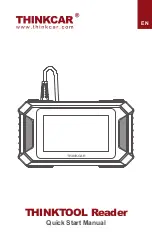
Page 19
•
Card 4 gets lost
– Delete it
using the card 2
, which is available, and using the procedure
from
chapter 6.8.3
– Read
+ (inserting) programming card
, then
5x + (inserting)
programming card
again, then
card 2
, and finally
+ (inserting) programming card
again.
Register the change in your table
.
Pic.5 g): Deleting card 4 using the card 2, table after deleting card 4
•
It is necessary to
add another card
(card 6). We proceed with the procedure from
chapter 6.8.1
again.
1
– Read
+ (inserting) programming card
, read
cards 1-5
, after
15 s the programming mode is exited.
Register the change in your table
.
Pic. 5 h): Table after inserting card 6
A new card is always inserted at the position after the last inserted card. In case of deleting
all cards using the procedure described in
chapter 6.8.4
, it is necessary to create a new filing
table.
6.8.6 PIN change
It is possible to change a PIN code in the re
ader’s memory by pressing the key sequence
Esc - 1
– Enter
(at a reader in a mode with a keypad for PIN entering). The reader enters
PIN changing mode
. In this mode the user attempting to change his PIN code must first
validate
his identity by reading his ID
card and entering the
current PIN code
; then he enters
the
new PIN
,
Enter
key,
new PIN again
and finally
Enter
key again. A record is stored in the
events archive whenever a PIN code is changed by a user (if the events archive is available).
6.9 ID expiration function
This function is implemented since the FW version 5.0.
It is possible to set an
Expiration date
for every
ID
stored in the module. When the date
occurs, the ID becomes invalid (expired). The expiration evaluation is performed on every
date
change in the module’s RTC and when the access rights are downloaded.
position
card
1
card 1
2
card 2 (available)
3
card 3
4
card 4 (lost)
5
card 5
position
card
1
card 1
2
card 2
3
card 3
4
card 4
5
card 5
position
card
1
card 1
2
card 2
3
card 3
4
card 4
5
card 5
6
card 6





































